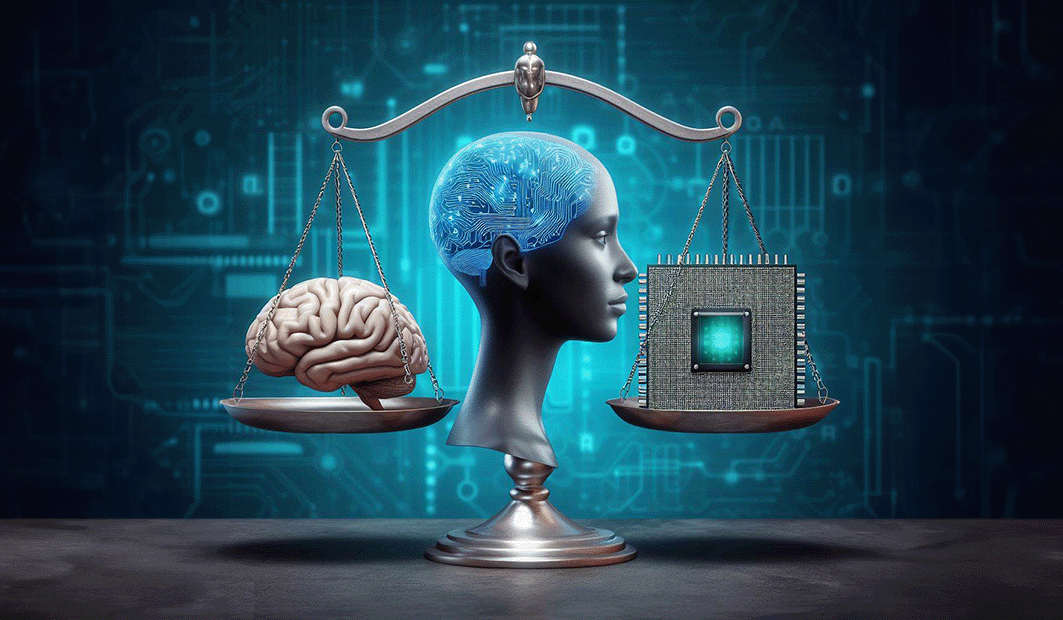Table of Contents
In an ever-evolving digital landscape, cybersecurity threats are not just a buzzword; they are a harsh reality that organizations face daily. While new technology promises to shield us from cyber calamities, it's essential to scrutinize these solutions critically. One such game-changer is Artificial Intelligence (AI), which has made significant inroads into cybersecurity, particularly in safeguarding against email security threats and Business Email Compromise (BEC) attacks. However, like any other technological advancement, AI isn't a silver bullet. In this blog, we will delve into the benefits and limitations of employing AI in cybersecurity measures to help you build a well-rounded perspective.
The Upside: AI's Proficiency in Cybersecurity
Quick Identification and Response - AI can sift through enormous volumes of data in seconds to identify anomalies and potential threats, a feat nearly impossible for humans to achieve at that scale and speed. This enables organizations to react more quickly to threats, especially in the realm of email security where BEC attacks are rampant.
Dynamic Learning Capabilities - The threat landscape is perpetually changing, with hackers developing new techniques and strategies. AI's machine learning algorithms can adapt just as quickly, learning from new kinds of threats and creating models to counteract them.
Reducing False Positives - AI systems are capable of understanding the context better than traditional rule-based security systems. This capability is a boon for filtering email communication more efficiently and reducing false positives, a common headache in email security.
The Downside: AI's Limitations
Lack of Human Intuition - While AI can process and analyze data at incredible speeds, it lacks the human intuition needed to understand nuanced behaviors or to make judgement calls in "grey areas."
Adaptation Lag - Though AI can adapt quickly, there is an adaptation lag during which new types of threats can wreak havoc. The evolving sophistication of BEC attacks can sometimes be ahead of the AI's learning curve.
Over-Reliance Risks - AI systems can create a false sense of security, leading to an over-reliance that may underutilize human expertise. Ultimately, the algorithm is only as good as the data it’s trained on, and poor-quality data can result in significant security lapses.
Building Your Evaluation Checklist
When considering AI for cybersecurity, ask yourself:
- How quickly does the AI system adapt to new threats?
- What's the false-positive rate, and how does it improve over time?
- Is there a mechanism for human experts to intervene and train the system?
- How is the AI system's performance benchmarked against conventional methods?
- Is the data that the AI trains on diverse and comprehensive enough?
The Bottom Line
AI offers an impressive array of benefits for cybersecurity, but it's not an infallible solution. Human expertise must complement AI systems to offer a truly robust cybersecurity infrastructure. If anyone tries to sell you the dream of 100% foolproof AI-based cybersecurity, let that be a red flag. The landscape is too intricate and too dynamic to hand over entirely to algorithms.
In the race against cyber threats, the best defense is a balanced approach that leverages both AI's computational power and human ingenuity. Stay vigilant, stay informed, and never stop questioning.
Explore More Articles
Say goodbye to Phishing, BEC, and QR code attacks. Our Adaptive AI automatically learns and evolves to keep your employees safe from email attacks.

/Concentrix%20Case%20Study.webp?width=568&height=326&name=Concentrix%20Case%20Study.webp)













.webp?width=100&height=100&name=PXL_20220517_081122781%20(1).webp)


